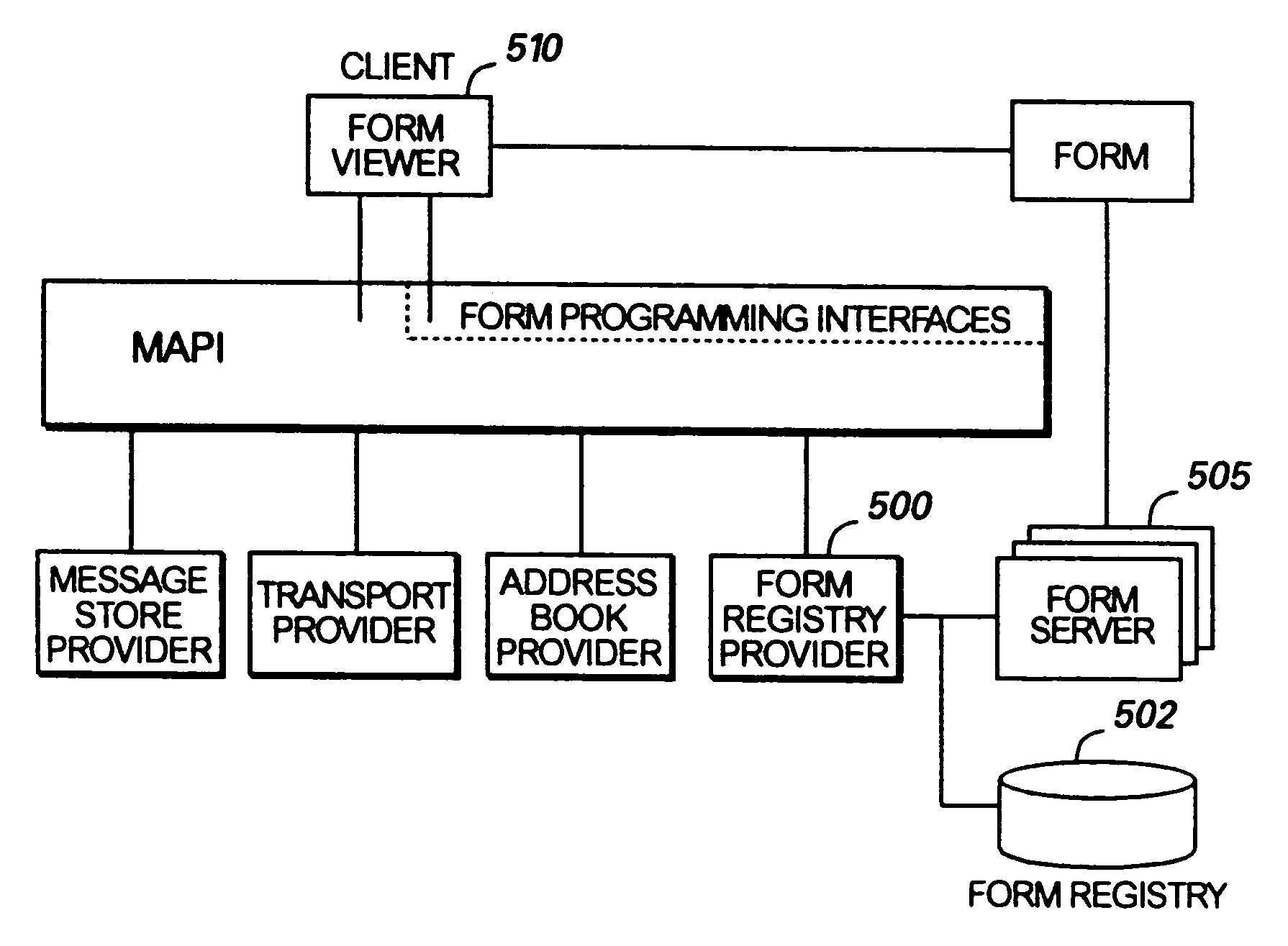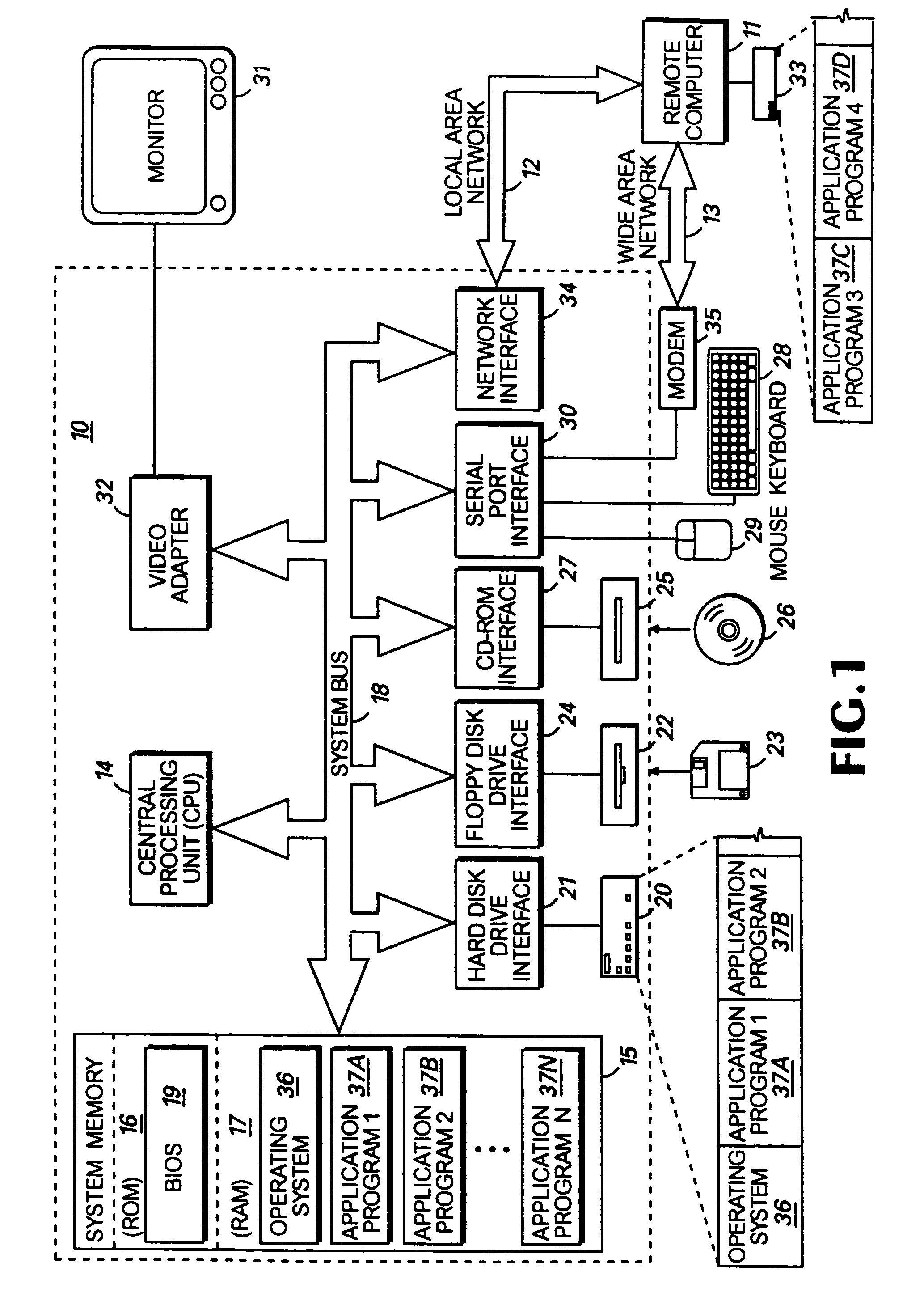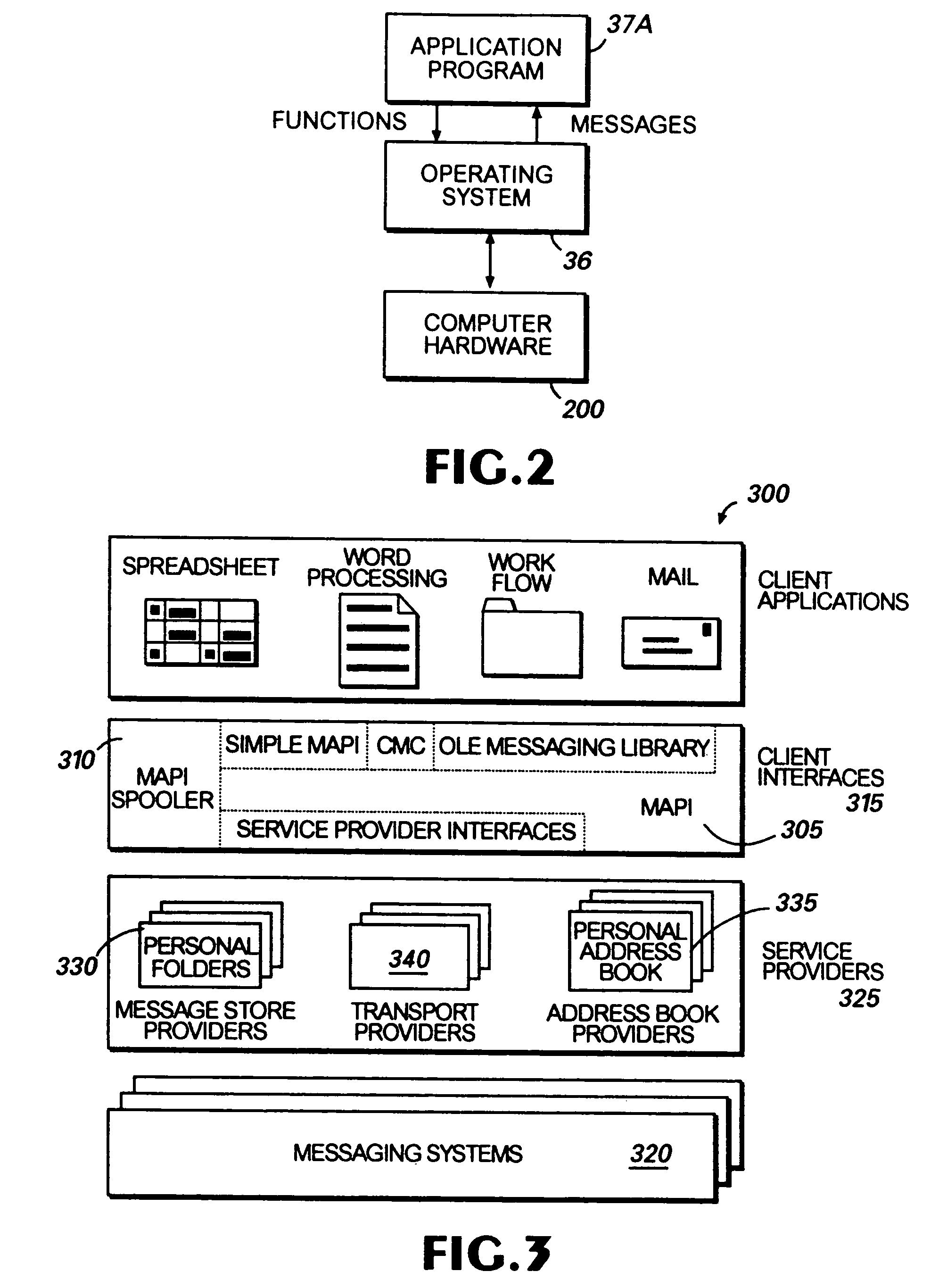Method for automatically implementing special forms in an e-mail system
a technology of automatic implementation and e-mail system, applied in the field of system and method for creating and sending electronic mail, can solve the problems of message being misdeliverable or not delivered at all, difficult for users to remember, and current e-mail systems are not without drawbacks
- Summary
- Abstract
- Description
- Claims
- Application Information
AI Technical Summary
Benefits of technology
Problems solved by technology
Method used
Image
Examples
Embodiment Construction
[0079]The present invention is directed to features associated with an electronic mail (e-mail) program module. The preferred embodiment of the present invention is represented by the “MICROSOFT OUTLOOK” program, which is a workgroup personal information management program published by Microsoft Corporation of Redmond, Wash. Briefly described, the preferred program allows users to manage their own calendar, messages, tasks, notes, and contacts and to share this information with others. Like many personal information managers, the preferred application program is divided into several modules, including a calendar manager, a task list manager, a contact manager, a message manager (e-mail), and a notes manager.
[0080]Although the preferred embodiment will be generally described in the context of a program and an operating system running on a personal computer, those skilled in the art will recognize that the present invention also can be implemented in conjunction with other program mod...
PUM
 Login to View More
Login to View More Abstract
Description
Claims
Application Information
 Login to View More
Login to View More - R&D
- Intellectual Property
- Life Sciences
- Materials
- Tech Scout
- Unparalleled Data Quality
- Higher Quality Content
- 60% Fewer Hallucinations
Browse by: Latest US Patents, China's latest patents, Technical Efficacy Thesaurus, Application Domain, Technology Topic, Popular Technical Reports.
© 2025 PatSnap. All rights reserved.Legal|Privacy policy|Modern Slavery Act Transparency Statement|Sitemap|About US| Contact US: help@patsnap.com



